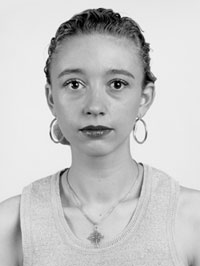Now, through February 10, 2008 the Museum of Fine Arts, Boston will be exhibiting the work of modern artists alongside that of the artists from the past who inspired their contemporary counterparts. The exhibition, being held in the museum’s Rabb Gallery, is the latest in the MFA’s new series dubbed “Contemporary Outlook.” The series contains focused exhibitions that are taken primarily from the MFA’s collections. The goal of the series is to examine the trends, ideas, and issues that permeate the art world as they emerge.
Currently on display as part of “Contemporary Outlook” is art from two countries whose identities were profoundly changed following the Second World War. The austere work of German photographers are balanced by the kawaii, or cuteness, of the post World War II art of Japan. While the Japanese portion of the exhibit contains art in a variety of media, and a number of different styles, the German portion focuses primarily on the New Objectivity movement of the 1920s and 30s and the influence it has had on German artists who emerged following the war.
New Objectivity was an art movement in Germany that lasted from the early 1920s, where it arose as opposition to expressionism, until the rise of National Socialism in the 1930s. Following the Nazi party’s ascent to power, New Objectivity was condemned as being degenerate art, and much of it was confiscated and destroyed. What survived provided the inspiration for the subsequent generations of artists that followed, such as Bernd and Hilla Becher, a German photographing team that taught many of the artists on display at the exhibit, including Andreas Gursky, Thomas Ruff, and Candida Höfer.
The work of these artists provide an excellent compliment to the earlier work of the New Objectivity movement. The influence from each generation to the next is clear; many of the subjects of the various artists focus on the common shapes of buildings. The photographs range from small black and white static prints to large, and lush full color images of subjects in motion.
The Japanese portion of the exhibit, meanwhile, looks at three generations of Japanese artists. In similar fashion to the German section, the Japanese collection displays the work of modern artists next to the work of the mentors that influenced them. Following World War II, Japanese art began to move away from the traditional Japanese subject matter, and Japanese artists began to explore international subjects and styles, yet much of the traditional subjects endured.
The most satisfying part of this exhibition is watching the process of reconciliation of ideas and styles from both the East and West. The collection contains around 30 different works of Japanese art, many deeply rooted in the kawaii tradition of excessively cute characters. However, a growing number of female artists have been examining this tradition in new ways, challenging the notion that the use of kawaii is in fact a form of escapism intended to obscure the darker nature of Japanese society.
More information on this, and other exhibitions at the MFA can be found at www.mfa.org.





















































